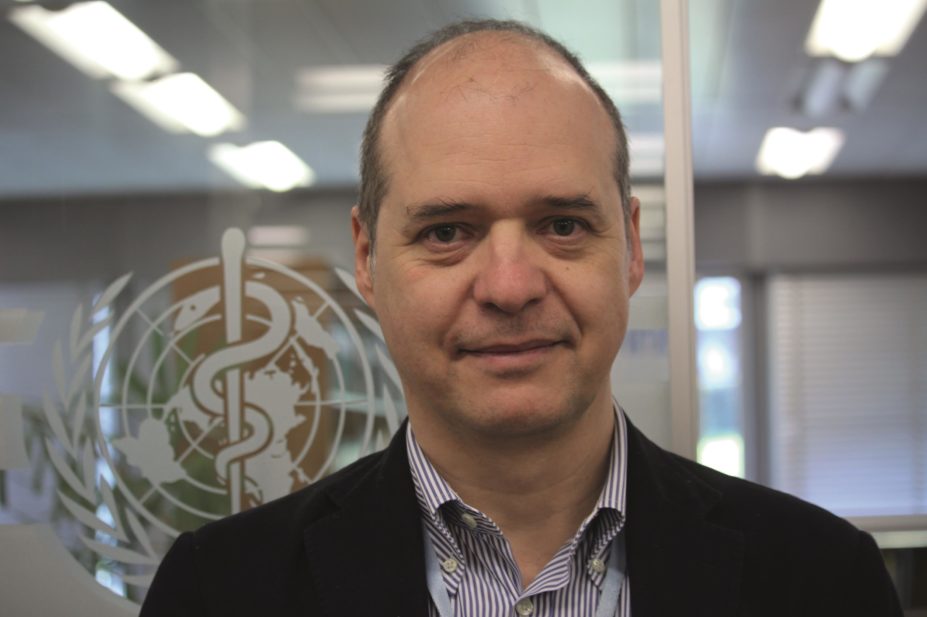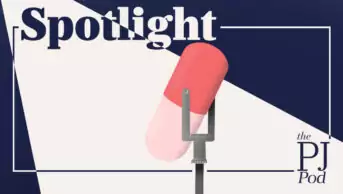
John Zarocostas
Since April 2014, Nicola Magrini has been leading the World Health Organization (WHO) Essential Medicines List (EML) Secretariat for the comprehensive EML update (May 2015) and is currently secretary of the WHO expert committee on the selection and use of essential medicines. He is also a member of the WHO research ethics review committee. Magrini is a medical doctor with a specialty in clinical pharmacology and has 20 years’ experience in drug evaluation and pharmaceutical policies. He is a founder member of the Italian Cochrane Centre. From 2008 to 2014, he was the director of the Bolognia-based WHO Collaborating Centre for Evidence-based Research Synthesis and Guideline Development.
The WHO held the first global meeting of national non-communicable diseases programme directors and managers on 15–17 February 2016. What were the main outcomes of this?
The main message was how we can have a better convergence of all stakeholders towards building a more constructive framework for non-communicable diseases (NCDs). Non-communicable means a wide range of chronic diseases, such as cardiovascular disease, respiratory disease and diabetes, and also cancer. We need receptive and resilient healthcare systems that are capable of managing such a complex range of diseases, so the aim of this event was to try to draw the attention of political decision-makers towards this huge area of work.
WHO data show that NCDs account for more than 36 million deaths each year, equivalent to around 63% of total deaths worldwide. Is there a chance of reducing this burden, especially among people aged under 70 years?
Many NCDs can be preventable or curable. In the recent update of the WHO EML for cancer we provided a comprehensive update of 16 medicines to try to tackle the most curable tumours (typically leukaemia or breast cancer), but these diseases require a fully established healthcare system to be tackled effectively. It’s not just a matter of a pill or a cure, but a system of care. For cardiovascular disease, focusing on prevention is easier since we have many evidence-based treatments to reduce risk factors, hypertension, cholesterol, weight and so forth. With regard to lowering blood pressure and cholesterol, we have many evidence-based treatments available. But for patients to lose weight it is more complex and requires control of diet and exercise.
How many drugs have been added to the EML to treat cardiovascular disease and diabetes in recent years? And what is being done to lower the cost of these drugs to improve access?
The list for cardiovascular drugs was not extended recently because most evidence-based treatments were added to the list more than ten years ago (including enalapril in 2003 and simvastatin in 2007). For diabetes, there are still many problems with access to insulin and the WHO is fighting for better access to this essential medicine. Cost is one hurdle but it is often not the only or main driver. We are planning a comprehensive review of the EML for diabetes treatment.
Is there scope for the EML to be expanded further?
The list is almost complete in terms of drugs for cardiovascular and respiratory diseases. What the list is lacking is moderate or high intensity treatments, and acute setting treatments for heart attacks (e.g. thrombolytic therapies for myocardial infarction) are probably in need of a full revision. For diabetes, we can review the absence of a couple of drug classes in the list, and we have to discuss whether the new insulin analogues could offer potential benefit.
WHO research reveals that 92 countries do not have adequate drug therapy for some NCDs. What can be done to improve access?
There are interesting proposals coming from the pharmaceutical industry in terms of reducing costs and controlling the mark ups in the distribution chain. By the way, since 2001, cost is no longer a selection criteria for the EML. This allows updates to the list to be more receptive to innovative drugs and treatments.
The United Nations’ Sustainable Development Goals aim to reduce premature mortality from NCDs by one-third by 2030. Is this goal too ambitious?
It’s certainly ambitious, but countries that can start increasing access to medicines for NCDs right now can, in 15 years, achieve it.
There are more than 14 million new cancer cases diagnosed and more than 8 million deaths each year, but some cancer drugs market for US$80,000–100,000 a year and are out of the reach of many people. What can be done?
For cancer, the four or five high-cost medicines that we added to the list are not as high as the figures you’ve mentioned. In saying that, drugs approved in the past three years could still be in the range of US$20,000–40,000 a year and that is still unaffordable in most countries. But the drugs we have added to the list are close to their patent expiry so once the generic manufacturers get on board the cost will go down.
What about tiered pricing for expensive cancer drugs as was done with HIV/AIDS drugs?
This was helped by the Global Fund. For cancer drugs we do not have a global procurement mechanism but we are trying to find new proposals and solutions that could make these drug prices sustainable. It is important to remember that cancer drugs are just one component and probably not the most important. To treat cancer, you need a hospital, clinical capacity, radiotherapy, surgery, etc. These resources are lacking in the places where cancer treatments are available and not affordable, so the investments should be much wider, especially in secondary and tertiary healthcare.
Are cancer drugs going to climb up the global health priority agenda in 2016–2017?
We are still not there. There should be extra efforts or perhaps a re-prioritisation because our effort was directed towards an advocacy role of driving the agenda towards higher investment for cancer overall, not just for drugs. But we could do more, and we should do more, to increase and drive attention towards better cancer treatment.


